With several national parks and 50 state parks in Hawaii, enjoying the Hawaiian outdoors is easy to do. Honouring the state’s natural splendour and rich native culture, the national parks of Hawaii offer a range of adventures for all age groups.
There are two national parks in Hawaii – Hawaii Volcanoes National Park and Haleakalā National Park – and several Hawaii national park sites, including national historical parks, memorials and historic sites. From the awe-inspiring Puʻukoholā Heiau National Historic Site to the tragic tale of Kalaupapa National Historical Park on Molokai, visiting Hawaii’s national park sites will help you discover what makes the Hawaiian Islands unique.
Also read:
- 20 Hawaii Landmarks
- 20 Hawaii Beaches
- 20 Things To Do In Hawaii At Night
- Hawaii For Kids
- Oahu Itinerary
- 8 Hawaii National Parks
- 20 Things To Do In Waikiki
- 20 Cities in Hawaii
- Best Island To Visit In Hawaii
- 20 Maui Waterfalls
- Where To Stay In Maui
- Where To Stay In Hawaii
- 20 State Parks In Hawaii
- 15 Things Hawaii Is Famous For
- Winter in Hawaii – 20 Things To Do
- 20 Things To Do In Molokai
- 20 Things To Do In Lanai
- 20 Places To Go Surfing In Hawaii
8 Hawaii National Parks
National Parks In Hawaii
1- Haleakalā National Park
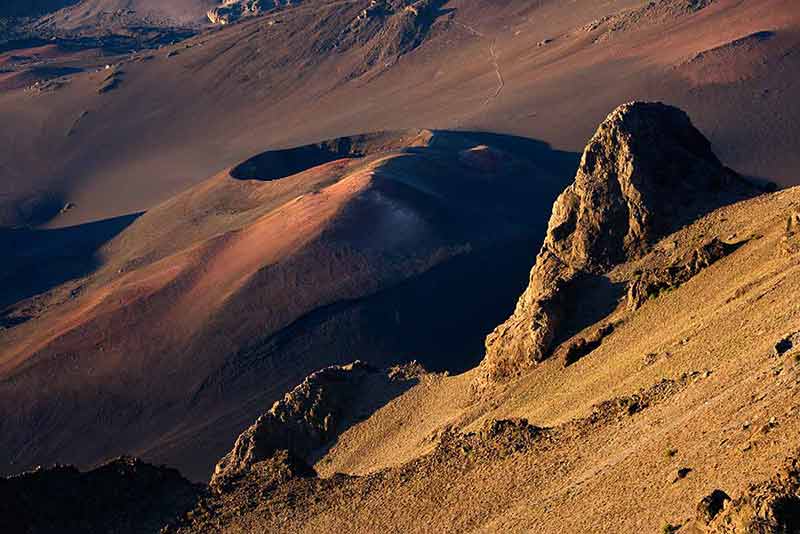
Haleakala Crater towers over the island of Maui and is a spectacle of nature that emerged from the floor of the ocean over a million years ago.
At 10,023 ft (3055 m) above sea level, this dormant volcano is the backdrop for a stunning variety of landscapes.
In the Hawaiian language, Haleakala means ‘home of the sun’.
According to legend, the demigod Maui threw a lasso around the sun while standing on the volcano’s top, slowing its descent to make the day endure longer.
Mark Twain called Haleakalā’s spectacular sunrises ‘the most sublime spectacle I have ever witnessed’ after he first laid eyes on the splash of colour on the horizon at dawn.
Travel up to the Haleakalā Crater during the early hours of the morning to soak up this natural spectacle first-hand.
Haleakalā National Park has so much to see and do, with various landscapes ranging from Martian red rock to majestic springs and waterfalls surrounded by tropical greenery across 30,000 acres (12,141 ha).
Things To Do
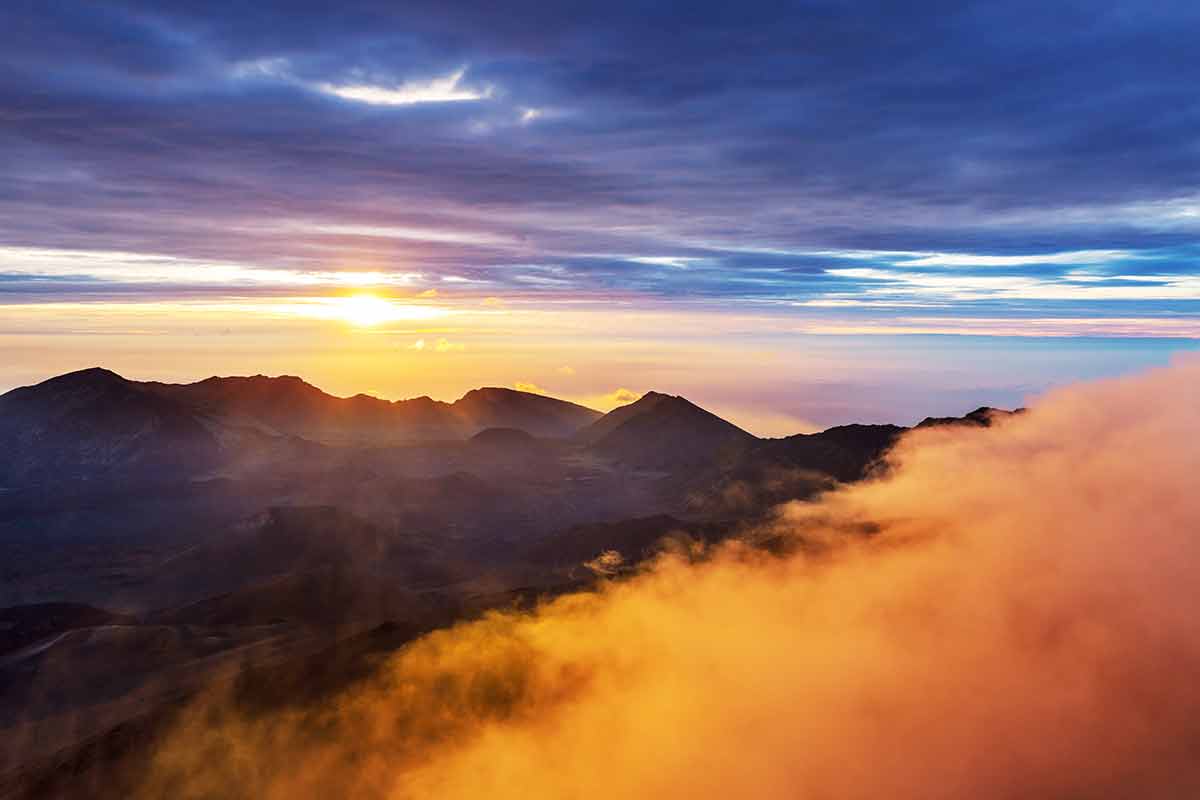
- Hiking and Horseback Riding
The park’s Keoneheehee and Pipiwai Trails are just two of the several hiking routes that run along the top and through the verdant Kipahulu area.
Offering superb vistas of Maui and the Pacific Ocean, hiking durations range from half an hour to three-day overnight trips.
Horse riding is also popular throughout the park.
- See Exotic Wildlife
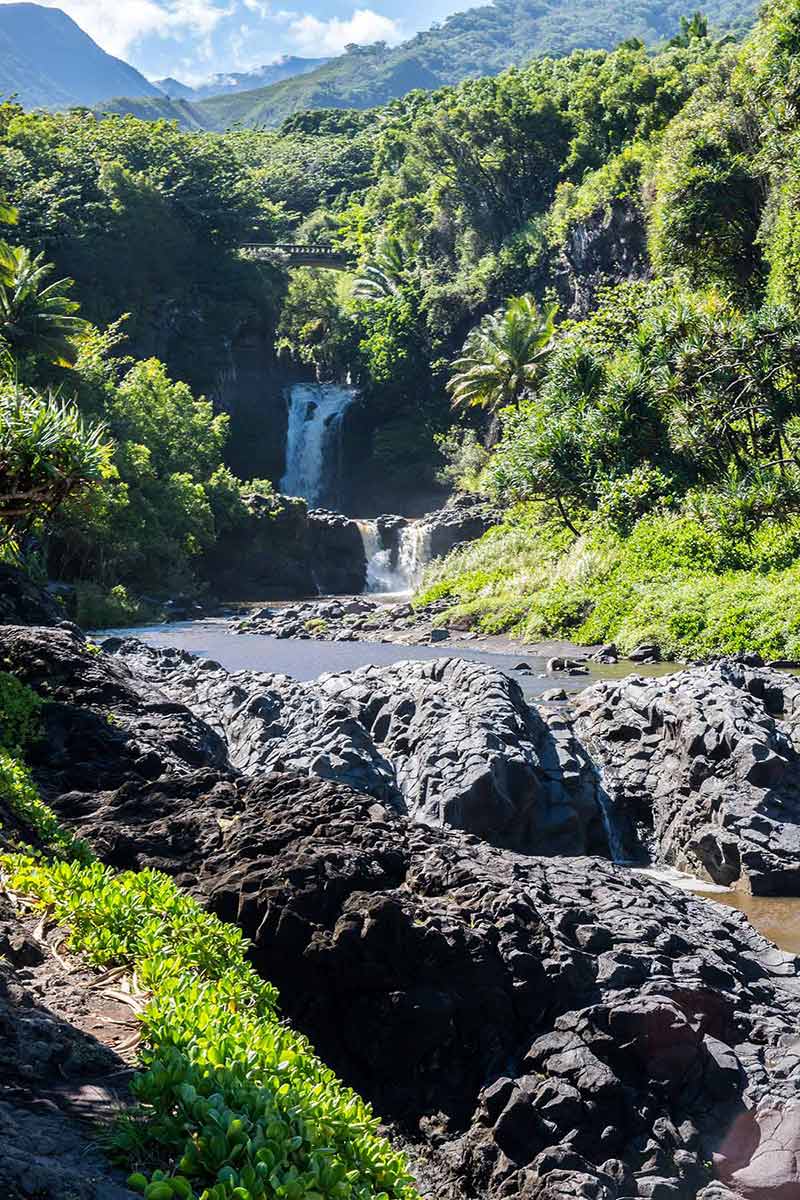
With more endangered species than any other Hawaii national park, Haleakalā National Park is an absolute treat for nature lovers.
See Hawaii’s state bird, the Nene, spot the rare ahinahina plant, which only grows on the slopes of Haleakalā, and look for silversword blossom, which can take as long as 50 years to bloom.
Most of Haleakalā’s flora grows nowhere else in the world, making the natural treasures of this Hawaiian national park incredibly rare and extremely beautiful.
- Enjoy Spectacular Views
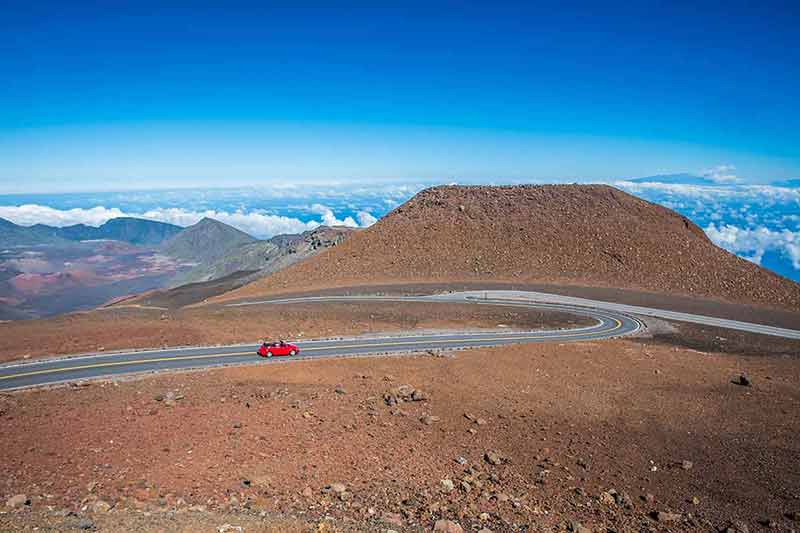
On clear days, you can spot as many as three Hawaiian Islands, Lanai, the Island of Hawaii and Molokai, from atop the Haleakalā Crater.
The park draws large crowds at dawn when watching the amazing sunrise over the Pacific is a bucket list item for many. You’ll need to make a reservation to enter the park during this popular time of the day.
For a less crowded experience, venture up the crater at dusk to catch the equally spectacular but slightly less busy sunsets.
2- Hawai’i Volcanoes National Park
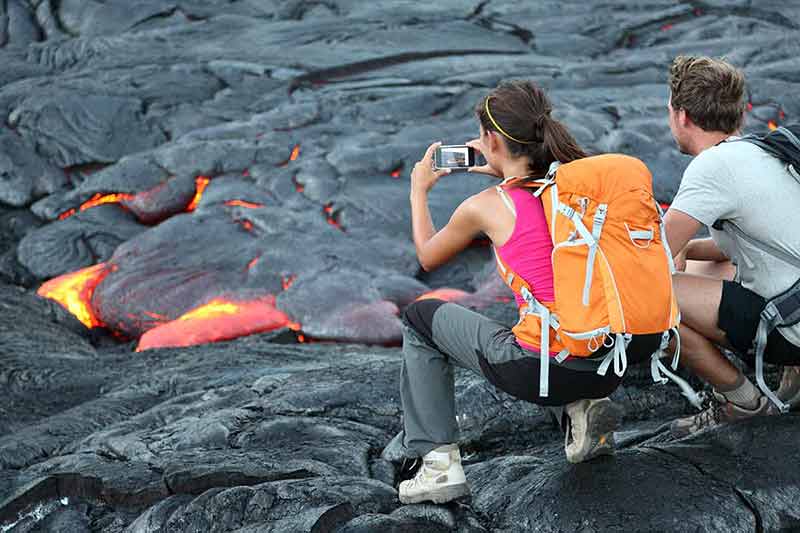
Hawai’i Volcanoes National Park is on the slopes of Mount Kilauea, the world’s most active volcano that last erupted as recently as September 2021.
The remarkable park on Hawai’i’s Big Island is a stunning reminder of nature’s power and constant shifting.
Hiking routes pass by lava tubes and flows, steam vents and wild beaches, while a long, winding downhill drive passes by several of the park’s main attractions, including the famous Holei Sea Arch.
The sprawling 505-square-mile (1,308 sq. km) park covers so many unique attractions and landscapes that it’s impossible to see them all in a day.
Apart from the constantly rumbling 4,091 ft (1,247 m) Mount Kilauea, the park is also home to Mauna Loa, which is the tallest at 13,677 ft (4,169 m) volcano on earth.
Since the 1840s, visitors have been flocking to Kilauea to view the park’s volcanic marvels.
Before it became a national park in 1916, Kilauea’s top caldera rim was already home to hotels such as The Volcano House hotel, built back in 1877.
The first and largest national park in Hawaii, Hawai’i Volcanoes National Park is a popular destination that receives over 2.5 million annual visitors.
Hawaii Historic Parks, Memorials and Trails
3- Kalaupapa National Historical Park
The breathtakingly picturesque Kalaupapa Peninsula is on Moloka’i, Hawaii’s most remote island.
The only way to get to this beautiful peninsula of long white-sand beaches and lush greenery is via a winding trek down Pali cliffs, the world’s tallest sea cliffs, or by plane.
Because of its remote location, in 1865, King Kamehameha V banished people with Hansen’s illness (leprosy) to live in isolation in Kalawao village in the park for more than a century after the disease arrived on the islands.
Now a National Historic Landmark and jointly managed by the National Park Service and the Hawaii State Department of Health, over 8,000 patients were forcibly relocated to Kalaupapa from the colony’s founding until it ended in 1969.
About a dozen descendants of the original patients still live on the peninsula, opting to remain in the only home they know despite many attempts to relocate them.
The park’s rich history and impeccable natural beauty make it one of the state’s very best parks to visit.
Visitor numbers to Kalaupapa National Historical Park are limited, so be sure to make a reservation well in advance with one of the park’s local guides no to miss out on visiting Kalaupapa National Historical Park.
4- Pu’uhonua O Hōnaunau National Historical Park
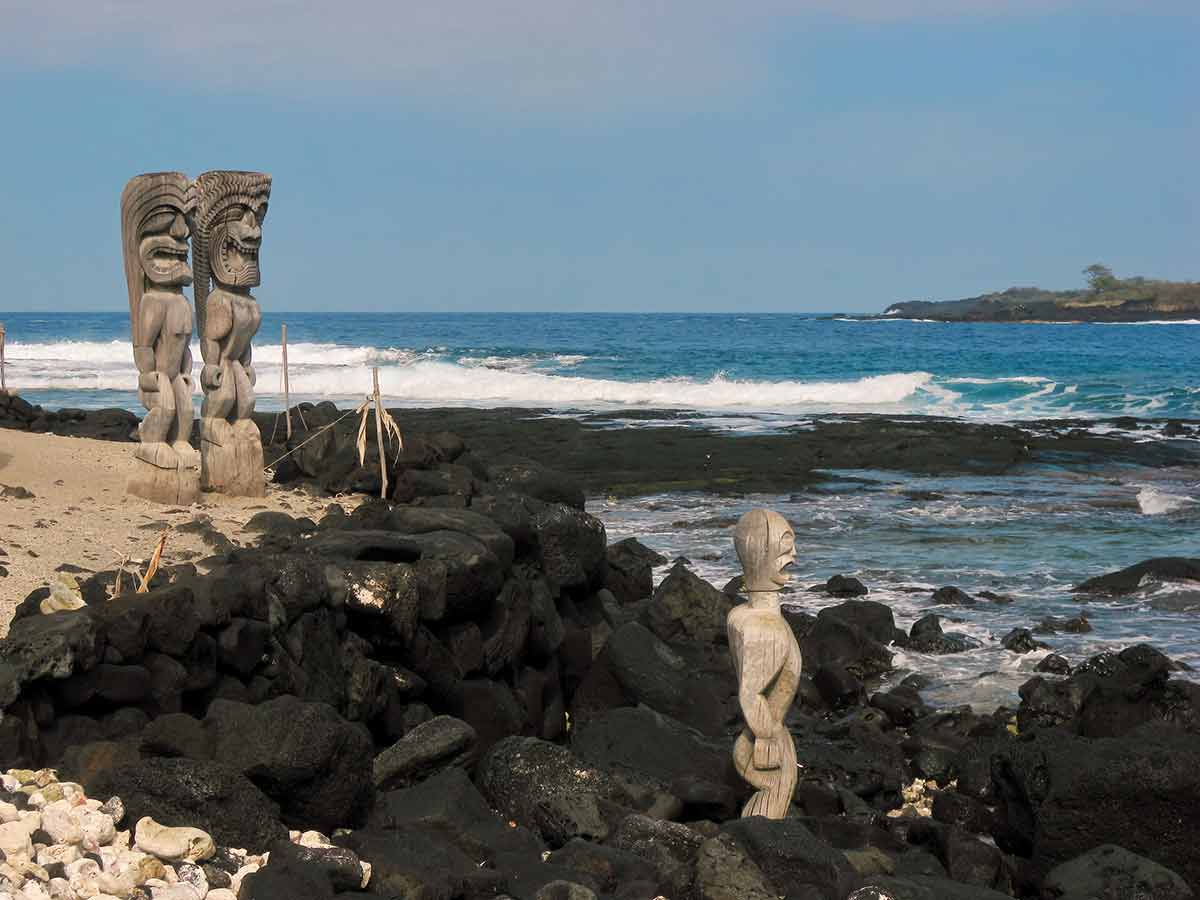
Overlooking the Big Island’s Honaunau Bay, Pu’uhonua O Hōnaunau National Historical Park is the perfect setting to experience native Hawaiian history, plus some of the best snorkelling and scuba diving locations in Hawaii.
Perfectly combining history and nature, Pu’uhonua O Hōnaunau, meaning ‘place of refuge at Honaunau’, was originally a sanctuary for native ‘taboo-breakers’ hoping to live their lives away from the judging populace.
Visitors to Pu’uhonua O Hōnaunau National Historical Park can see all of the park’s best sites by joining a half-mile-long walking tour.
The park’s engaging visitors centre provides informative brochure maps and valuable insight into the park’s rich history.
Upon arriving at the park’s entrance, you are greeted by 15 ft (4.6 m) wooden kiʻi deity images at the site where Kona aliʻi (chiefs) and their warriors lived, surrounded by gentle ocean breezes and crashing waves.
To avoid the midday heat and crowds, visit early in the morning or late in the afternoon.
On the last weekend in June, the park hosts its annual traditional Hawaiian cultural festival, which features authentic food, hula dancing, Hawaiian crafts and cultural demonstrations.
A coastal palm-tree grove just south of the park’s core village area is one of the Big Island’s best picnic spots.
Parking, picnic tables and grills are located in front of a wide slab of pahoehoe (smooth-flowing lava) that is covered with lava-rock boulders and dotted with bustling natural tide pools where you can spot sea turtles.
Although swimming is dangerous but possible, depending on the ocean swell, snorkelling within the park’s boundaries is prohibited. It’s a pity as there are stunning snorkelling areas near the shore.
5- Kaloko-Honokōhau National Historical Park
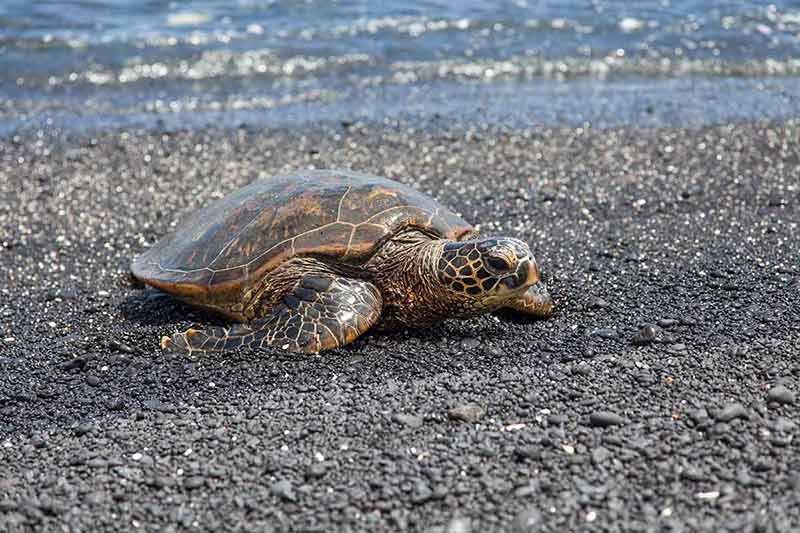
This impressive 1,160-acre (469 ha) national park in Hawaii is north of Honokōhau Harbor on the Big Island.
At the underrated site on the Kona Coast, fish traps, lava planters used to cultivate taro and the ahupuaa (land partition) between Kaloko and Honokōhau give the park its name and are some of the unique features that allowed native Hawaiians to flourish in this remote setting.
Heiau (temples), burial caverns and petroglyphs are also found within Kaloko-Honokōhau’s boundaries, making the park an excellent location to wander around and explore all day long.
The park provides an insight into how native Hawaiians lived and thrived here despite the scorching heat and remote setting of the area.
It covers 1,100 acres (445 ha) dedicated to preserving marine wildlife, such as honu (green sea turtles), and the region’s rich history and culture.
The mile-long coastal hiking route in the park that forms part of the Ala Kahakai National Historic Trail takes you past 100-year-old fishponds protected by gigantic lava rock loko kuapa (seawalls) built entirely by hand without any mortar.
These fishponds, used initially to trap and sustainably raise ocean fish, are now protected wetlands for native birds such as the Hawaiian stilt and the Hawaiian coot.
6- Pearl Harbor National Memorial
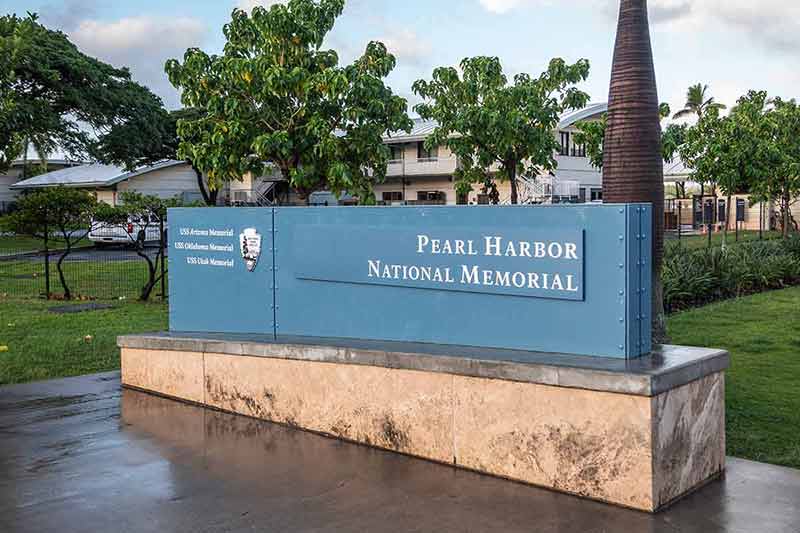
Pearl Harbor National Memorial is a National Park Service monument that chronicles the history of the infamous Pearl Harbor attack on 7 December 1941 on the island of Oahu.
The memorial honours the servicemen and women who lost their lives on that fateful day. It’s one of the most important WWII landmarks in the United States.
The memorial is wheelchair accessible and the visitor centre at the memorial’s main gate is a hub for visits to the other parks and museums in Pearl Harbor.
The memorial’s boat deck stands on the exact location where the USS Arizona sank during the attack, however, the Pearl Harbor National Memorial commemorates much more than just the USS Arizona.
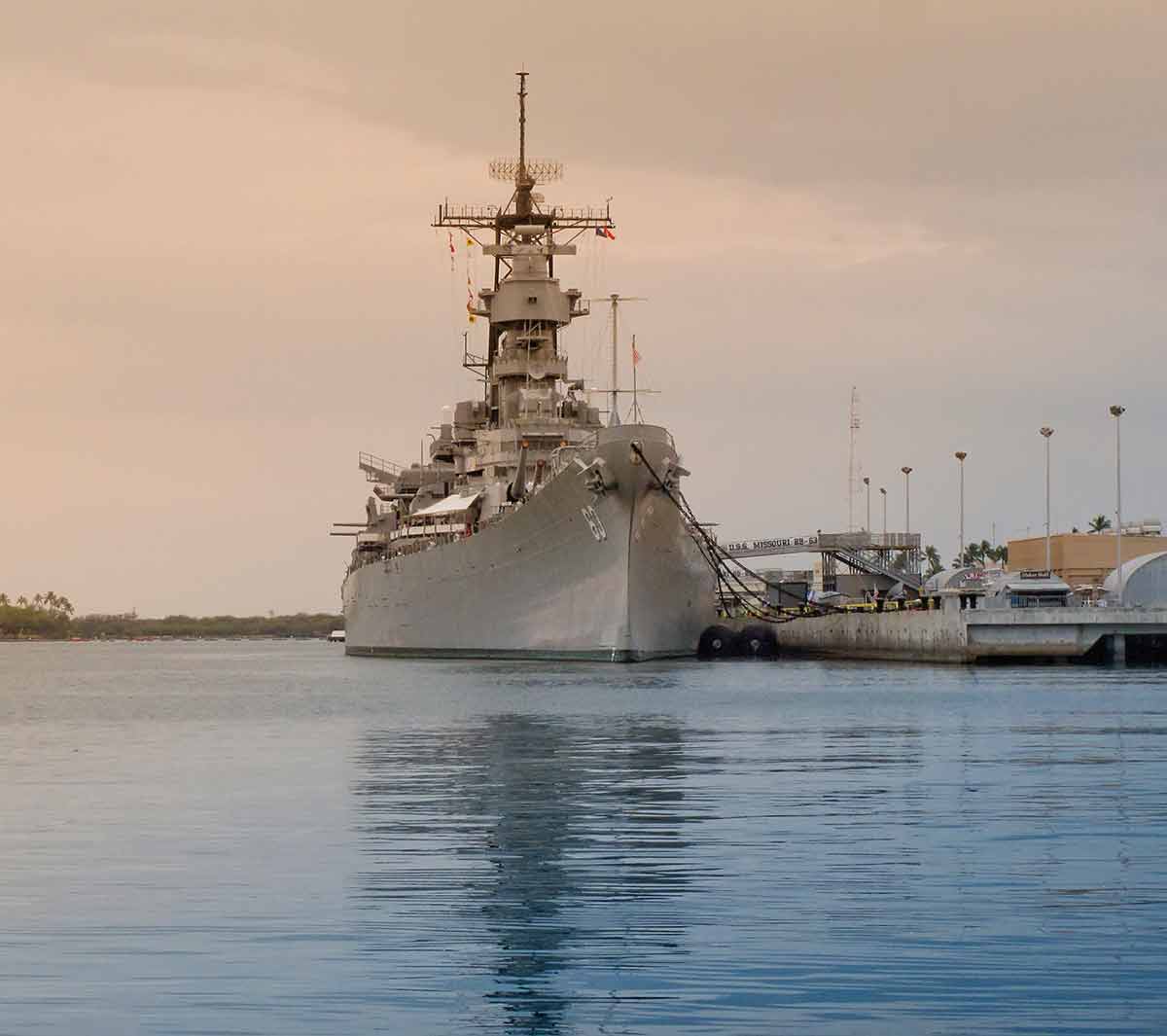
The two excellent museums on the memorial’s grounds bring this significant event to life through various interactive displays of historical images, films and illustrated graphics.
A walk down the beach passes placards depicting the events of the attack in the now-peaceful harbour.
The memorial’s impressive bookstore stocks a variety of books and films detailing the attack on Pearl Harbor and WWII’s Pacific Theatre and interesting drawn battle maps.
If you’re fortunate, one of the few remaining Pearl Harbor veterans will be on hand to sign autographs and answer any questions visitors may have about the tragic event.
7- Puʻukoholā Heiau National Historic Site
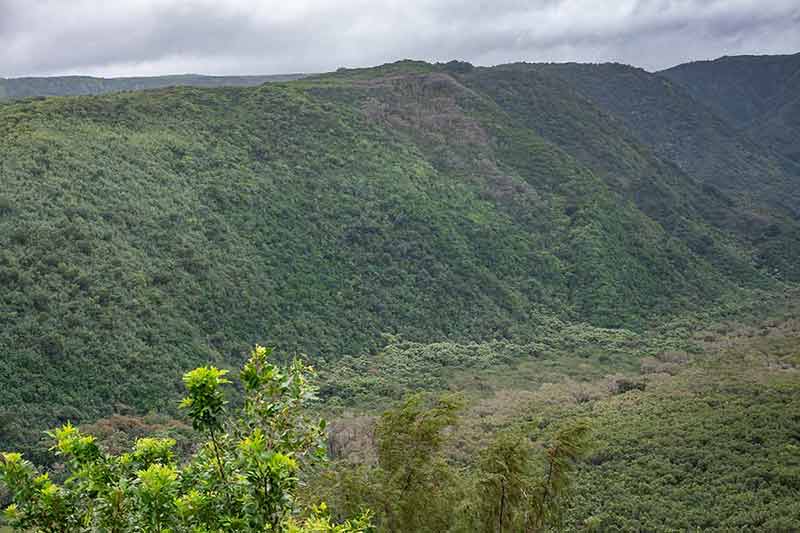
Pu’ukoholā Heiau National Historic Site overlooks Kawaihae Bay on the Big Island’s South Kohala shoreline.
It’s one of the last significant sacred buildings built in Hawaii before outside cultures arrived on the islands and changed the native Hawaiians’ traditional way of life.
The temple was constructed in 1790 at the behest of King Kamehameha the Great after being told by a prophecy that if he erected a massive heiau worshipping the war god Ku atop Puʻukoholā, he would rule over the Hawaiian Islands.
Over 1,000 workers dragged lava rocks from the Pololu Valley to Puʻukoholā by hand along a 25-mile-long (40 km) human conveyer belt across the Kohala mountain range.
They completed the temple within a year, using no mortar to build its 20-foot tall (6 m) walls.
The assassination of a rival Big Island chief at the site would be King Kamehameha’s first triumph in his quest to unite the Hawaiian Islands under his reign and the starting point of what would be an impressive legacy still remembered to this day.
Despite the restricted entry into the temple, the park’s picturesque trails wind past two other heiau on the site and the oceanfront royal courtyard Pelekane.
Trails also pass by the former homestead of John Young, a stranded British sailor who became a trusted military advisor to King Kamehameha.
The natural beauty and impressive historical significance make the Puʻukoholā Heiau National Historic Site one of the Big Island’s best attractions in Hawaii.
8- Ala Kahakai National Historic Trail
The Ala Kahakai National Historic Trail is one of the best and last examples of an ala loa, well-travelled footpaths that connected coastal areas of ahupua’a and (like modern highways) were crucial to the flourishing of early native Hawaiians.
The Ala Kahakai Trail stretches for over 175 miles (282 km) from Upolu Point on the Big Island’s northernmost tip to the easternmost boundary of Hawaii Volcanoes National Park.
The trail passes through more than 200 ahupua’a and hundreds of historically and culturally significant sites like temples, native settlements, fishponds and petroglyph fields.
Although you can’t hike the entire length of the Ala Kahakai Trail because stretches of the trail are on private, state and federal property, the National Park Service is actively working on opening up the entire trail to the public.
Once fully linked, the trail will connect the Hawaii Volcanoes National Park, Pu’uhonua o Hōnaunau, Kaloko-Honokōhau and Pu’ukoholā Heiau to become a hikeable highway linking all of the Big Island’s best parks together.
Large stretches are open to the public and are great to hike along, so check out the Ala Kahakai National Historic Trail to take in some of Hawaii’s best-preserved historical sites while enjoying nature.
If you love exploring national parks, you might like to read:
- Wyoming National Parks Guide
- Nevada National Parks Guide
- Michigan National Parks Guide
- 5 Maine National Parks
- New Hampshire National Parks Guide
- 25 National Parks in Canada
- 17 National Parks in Argentina
- Tasmania National Parks
- 20 National Parks in Mexico
- 18 New Mexico National Parks
- 18 National Parks in Massachusetts
- 17 Colorado National Parks
- 4 Indiana National Parks
- 5 Nebraska National Parks
- 30 Virginia National Parks
- 9 New Jersey National Parks
- 8 National Parks in Arkansas
- 8 Alaska National Parks
- 13 Tennessee National Parks
- 6 National Parks in Louisiana
- 5 Illinois National Parks
- 7 National Parks in Oklahoma
- 7 National Parks in South Dakota
- 12 Alabama National Parks
- 5 North Dakota National Parks
- 8 National Parks in West Virginia
- 20 National Parks in Arizona
- 11 National Parks In Florida
- 8 Hawaii National Parks
- 6 National Parks In Idaho
- Texas National Parks Guide
- 9 California National Parks
- 11 National Parks In Georgia
- 7 National Parks In Missouri
- 5 National Parks in Minnesota
- 7 National Parks In Kentucky
- 8 National Parks In Montana
- 15 National Parks In Washington State
- 8 South Carolina National Parks
- 12 North Carolina National Parks
- 4 Wisconsin National Parks
- 20 National Parks In India
- 11 Oregon National Parks
- 5 Connecticut National Parks
- 27 National Parks In New York State
- 4 Iowa National Parks
- Yosemite National Park
- Zion National Park
- 21 National Parks in Pennsylvania
- 9 National Parks in Mississippi
- 5 National Parks in Rhode Island
- 9 National Parks in Taiwan
- 20 East Coast National Parks
- Guide To Winter in Yellowstone National Park
Plan Your Trip

Rent A Car – Find the best car rental rates at Discover Cars. They compare car hire companies to provide you with the best deal right now.

Find A Hotel – If you’re curious about this article and are looking for somewhere to stay, take a look at these amazing hotels.





